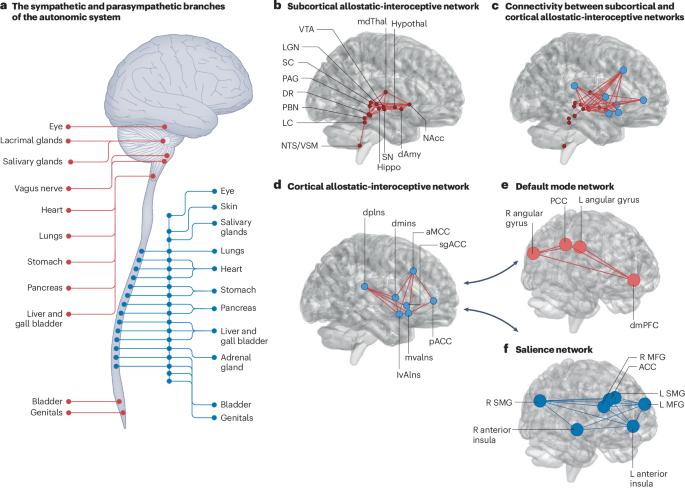Autonomic dysfunction in neurodegenerative disease
IF 26.7
1区 医学
Q1 NEUROSCIENCES
引用次数: 0
Abstract
In addition to their more studied cognitive and motor effects, neurodegenerative diseases are also associated with impairments in autonomic function — the regulation of involuntary physiological processes. These autonomic impairments manifest in different ways and at different stages depending on the specific disease. The neural networks responsible for autonomic regulation in the brain and body have characteristics that render them particularly susceptible to the prion-like spread of protein aggregation involved in neurodegenerative diseases. Specifically, the axons of these neurons — in both peripheral and central networks — are long and poorly myelinated axons, which make them preferential targets for pathological protein aggregation. Moreover, cortical regions integrating information about the internal state of the body are highly connected with other brain regions, which increases the likelihood of intersection with pathological pathways and prion-like spread of abnormal proteins. This leads to an autonomic ‘signature’ of dysfunction, characteristic of each neurodegenerative disease, that is linked to the affected networks and regions undergoing pathological aggregation. Neurodegenerative disorders are commonly associated with autonomic dysfunction as well as the more well-known cognitive and motor effects. In this Review, Mather describes how properties of neurons in the brain and periphery regulating autonomic activity render them more vulnerable to prion-like spread of pathological protein and subsequent neurodegeneration.


神经退行性疾病中的自主神经功能障碍
除了研究较多的认知和运动方面的影响外,神经退行性疾病还与自主神经功能的损伤有关,即对非自主生理过程的调节。根据具体疾病的不同阶段,这些自律神经功能损伤的表现形式也不同。大脑和身体中负责自主神经调节的神经网络具有一些特征,使其特别容易受到神经退行性疾病中朊病毒样蛋白聚集扩散的影响。具体来说,这些神经元(包括外周和中枢网络中的神经元)的轴突很长,髓鞘化程度很低,因此是病理性蛋白质聚集的首选目标。此外,整合身体内部状态信息的大脑皮层区域与其他脑区高度相连,这增加了与病理通路交叉和异常蛋白质类似朊病毒扩散的可能性。这就形成了每种神经退行性疾病特有的自主神经功能障碍 "特征",这种特征与受影响的病理聚集网络和区域相关联。
本文章由计算机程序翻译,如有差异,请以英文原文为准。
求助全文
约1分钟内获得全文
求助全文
来源期刊

Nature Reviews Neuroscience
NEUROSCIENCES-
自引率
0.60%
发文量
104
期刊介绍:
Nature Reviews Neuroscience is a multidisciplinary journal that covers various fields within neuroscience, aiming to offer a comprehensive understanding of the structure and function of the central nervous system. Advances in molecular, developmental, and cognitive neuroscience, facilitated by powerful experimental techniques and theoretical approaches, have made enduring neurobiological questions more accessible. Nature Reviews Neuroscience serves as a reliable and accessible resource, addressing the breadth and depth of modern neuroscience. It acts as an authoritative and engaging reference for scientists interested in all aspects of neuroscience.
 求助内容:
求助内容: 应助结果提醒方式:
应助结果提醒方式:


